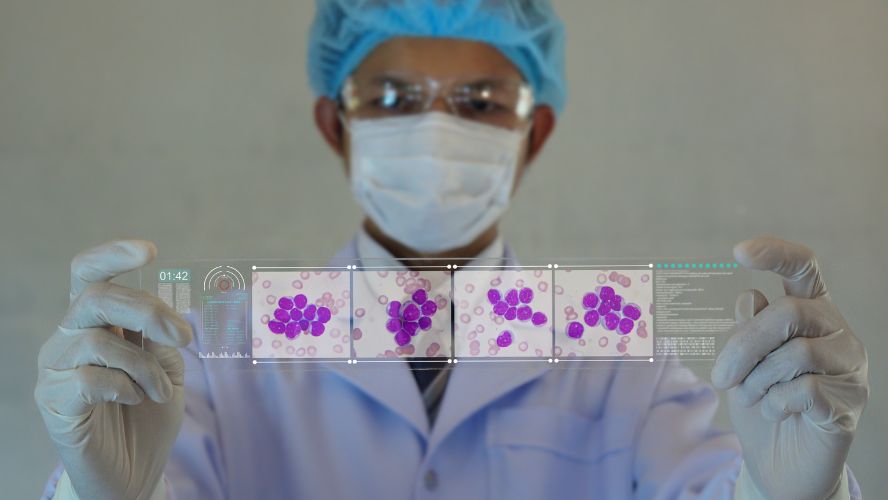
Acute myeloid leukemia (AML) is an aggressive blood cancer that arises when normal blood cell development goes awry. However, the disease does not follow a single pathway—each patient’s leukemia grows and develops in its own unique way. Understanding these differences has long been a challenge, but new research from the Princess Margaret Cancer Centre (PM) offers a clearer picture.
A team led by Dr. John Dick, Senior Scientist at PM, analyzed over 1.2 million leukemia cells from 318 AML patients, comparing them to a detailed atlas of healthy blood cells. This large-scale mapping effort revealed 12 key patterns of leukemia cell growth and development, showing how different genetic mutations drive the disease in distinct ways. Some leukemia cells resembled early-stage blood stem cells, while others mimicked more developed blood cells—findings that challenge traditional classifications of AML.
“These discoveries redefine how we see AML,” says Dr. Dick. “By understanding how leukemia cells develop, we can create treatments that precisely target a patient’s unique cancer.”
This research has immediate implications. Doctors could use these leukemia growth patterns to classify AML more accurately, leading to better treatment decisions. It also paves the way for personalized therapies that attack cancer at its root, based on its specific developmental pathway. Looking ahead, this map of leukemia’s hidden patterns could help researchers develop drugs that push leukemia cells back toward normal development—an approach known as differentiation therapy.
Dr. John Dick is a Senior Scientist and a Helga and Antonio De Gasperis Chair in Blood Cancer Stem Cell Research at the Princess Margaret Cancer Centre and Professor of Molecular Genetics at the University of Toronto (U of T). He is the senior author of the study.
Andy Zeng is an MD/PhD student in Dr. Dick’s lab at the University of Toronto and the first author of the study.
This work was supported by The Princess Margaret Cancer Foundation, the Canadian Cancer Society, the Ontario Institute for Cancer Research, the Canadian Institutes for Health Research, the University of Toronto’s Medicine by Design initiative with funding from the Canada First Research Excellence Fund, the Ontario Ministry of Health, a Canada Research Chair, and the Terry Fox Foundation.
Dr. John Dick has received research funding from BMS/Celgene and holds intellectual property licenses with Pfizer/Trillium Therapeutics. For a full disclosure of conflicts of interest, please review the publication.
Zeng AGX, Iacobucci I, Shah S, Mitchell A, Wong G, Bansal S, Chen D, Gao Q, Kim H, Kennedy JA, Arruda A, Minden MD, Haferlach T, Mullighan CG, Dick JE. Single-cell transcriptional atlas of human hematopoiesis reveals genetic and hierarchy-based determinants of aberrant AML differentiation. Blood Cancer Discov. 2025;OF1–OF18. doi:10.1158/2643-3230.BCD-24-0342.




